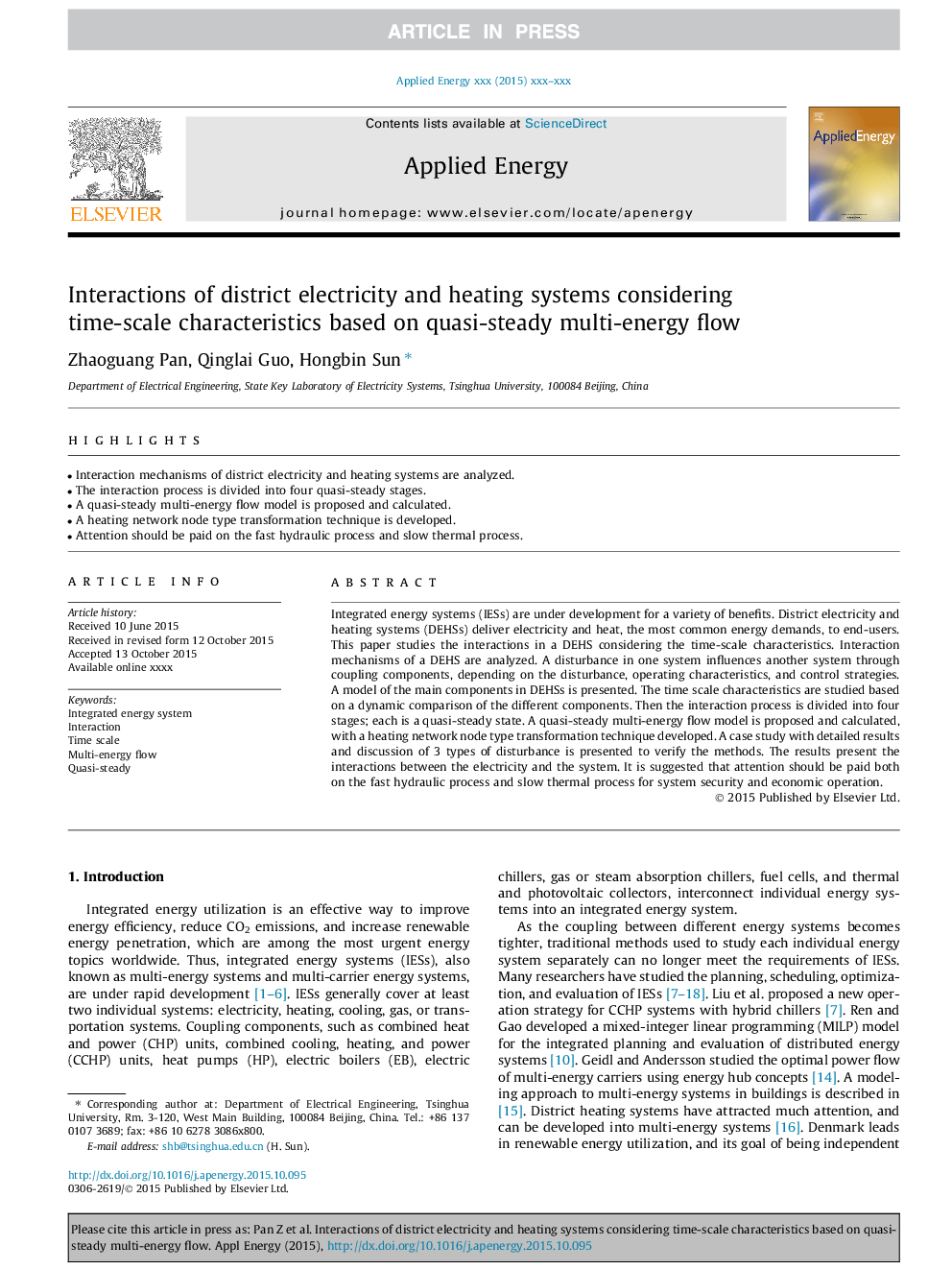| Article ID | Journal | Published Year | Pages | File Type |
|---|---|---|---|---|
| 6683745 | Applied Energy | 2016 | 14 Pages |
Abstract
Integrated energy systems (IESs) are under development for a variety of benefits. District electricity and heating systems (DEHSs) deliver electricity and heat, the most common energy demands, to end-users. This paper studies the interactions in a DEHS considering the time-scale characteristics. Interaction mechanisms of a DEHS are analyzed. A disturbance in one system influences another system through coupling components, depending on the disturbance, operating characteristics, and control strategies. A model of the main components in DEHSs is presented. The time scale characteristics are studied based on a dynamic comparison of the different components. Then the interaction process is divided into four stages; each is a quasi-steady state. A quasi-steady multi-energy flow model is proposed and calculated, with a heating network node type transformation technique developed. A case study with detailed results and discussion of 3 types of disturbance is presented to verify the methods. The results present the interactions between the electricity and the system. It is suggested that attention should be paid both on the fast hydraulic process and slow thermal process for system security and economic operation.
Related Topics
Physical Sciences and Engineering
Energy
Energy Engineering and Power Technology
Authors
Zhaoguang Pan, Qinglai Guo, Hongbin Sun,
